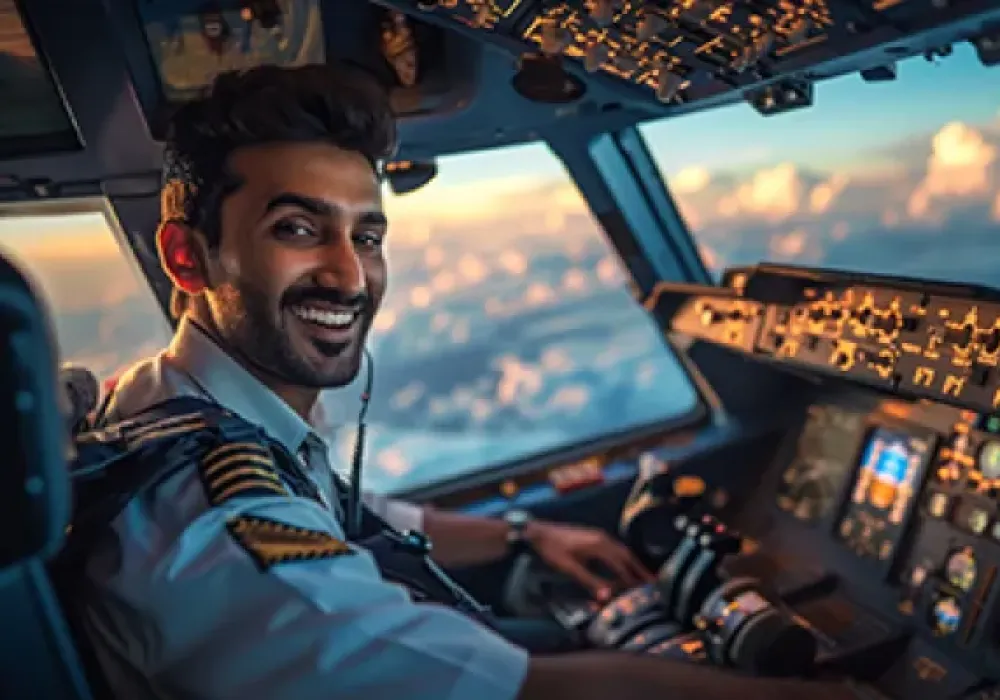The world of aviation is as vast as the sky and offers ample opportunities for you to choose from. The most exciting career choice from the lot will be that of a commercial pilot. However, the journey to reach the cockpit is long and requires a lot of dedication and hard work. Enrolling on the commercial pilot course after your 12th standard exams empowers you on your journey towards the cockpit.
If you are willing to go the extra nautical mile, here is all you need to know about the Commercial Pilot Licence (CPL) and requirements to enrol for pilot courses after the 12th.
Pilot Courses after the 12th Standard
The aviation industry is on the rise today and aviation careers are the most sought-after. Among them, becoming a commercial pilot stands at the forefront. To become a pilot, you need to enrol for commercial pilot course in India to obtain the commercial pilot licence.
What is a Commercial Pilot Licence?
A Commercial Pilot Licence (CPL) enables the holder to act as a first officer or a co-pilot for a commercial aircraft and get paid for it. In India, it is issued by the Directorate Board of Civil Aviation (DGCA). One of the primary requirements for candidates vying to become commercial pilots is to join the best commercial pilot training institute in India for CPL ground training.
Ground Training for CPL
Ground training covers the theory subjects for pilot courses, including navigation, meteorology and regulations. To receive the best training, ensure you enrol on the best commercial pilot school for ground classes, where qualified instructors with years of practical experience in the aviation field lead the commercial pilot course.
Eligibility Criteria for Commercial Pilot Course
To enrol on a commercial pilot course in India and become a commercial pilot, you must fulfil the following requirements:
- Be at least seventeen years old.
- Completed 10+2 (Class XII) exams with Physics and Mathematics as the core subjects.
Note: Candidates from other streams like Commerce, Arts or Humanities can undergo Physics and Maths training based on the NIOS curriculum to be eligible for CPL ground training.
- Complete a Class 2 medical examination by a DGCA-approved medical examiner.
- Be proficient in the English language.
Note: Candidates who want to enhance their English language skills can join the English Efficiency Training Program.
Subjects covered in CPL Training
Clearing the DGCA theoretical exam is critical to obtaining the CPL. The key topics covered in commercial pilot training program ground classes are:
- Air Regulations
- Aviation Meteorology
- Air Navigation
- Technical General
- Technical Specific
- Radio Telephony
Knowing these topics will help the candidates better understand the various concepts in the aviation industry and increase their chances of making a successful career in this industry.
DGCA CPL Theory Exams
After undergoing ground training at a top commercial pilot training institute in India, candidates must enrol for DGCA CPL theory exams. The DGCA conducts theory exams once every three months. The theory exams are all for 100 marks, and the candidates must score at least 70% in each subject to qualify.
Flight Training for CPL Pilot Course
In addition to theory exams, CPL candidates must complete 200 hours of flight time, which includes:
- 100 Hours Pilot In Command
- 40 Hours of Instrument Flight, out of which 20 may be on a Simulator
- 50 Hours Solo Cross Country
- 10 Hours Multi-Engine
- 10 Take Off and Landing by Night
Choosing the Commercial Pilot Institute in India
Once you have decided to enrol for the commercial pilot course after 12th, the next thing you must consider is the training institute that you enrol on. The best training institute for the commercial pilot course will have high-quality instructors with practical experience, offer the highest level of training, boast ultra-modern facilities and follow the DGCA-approved curriculum.

